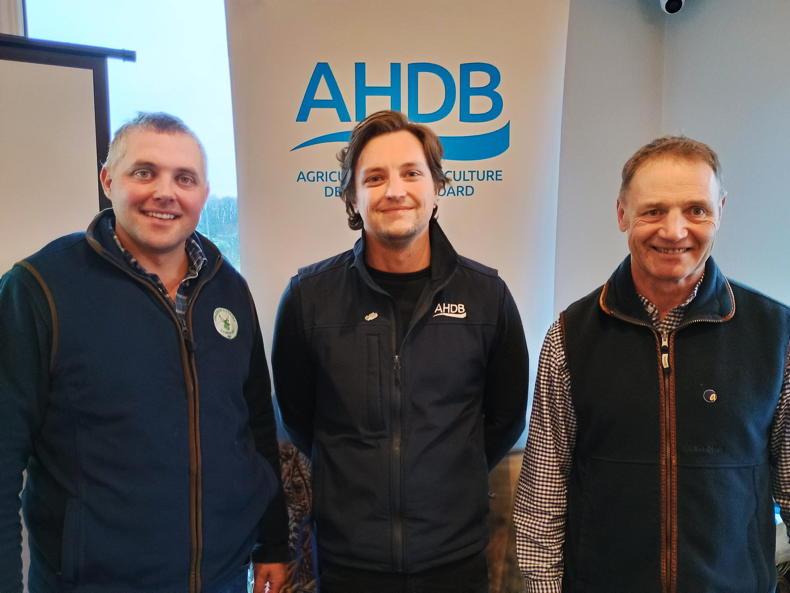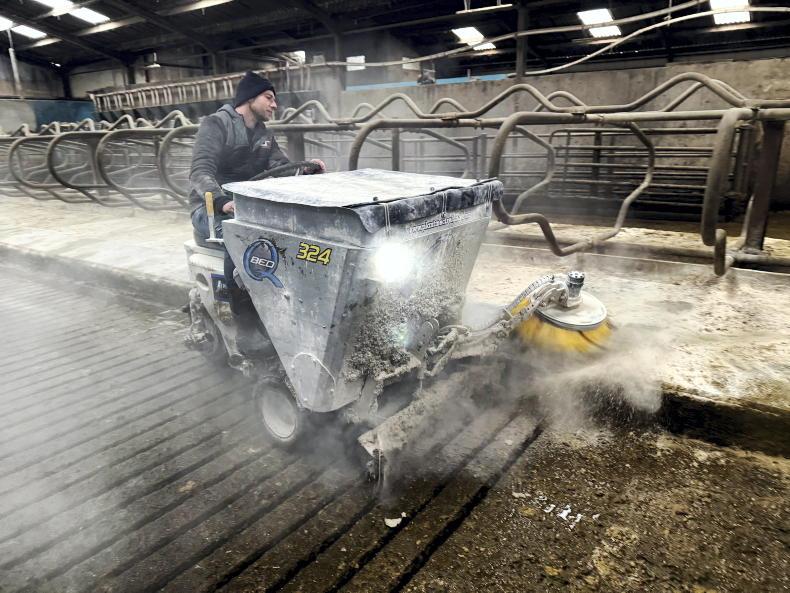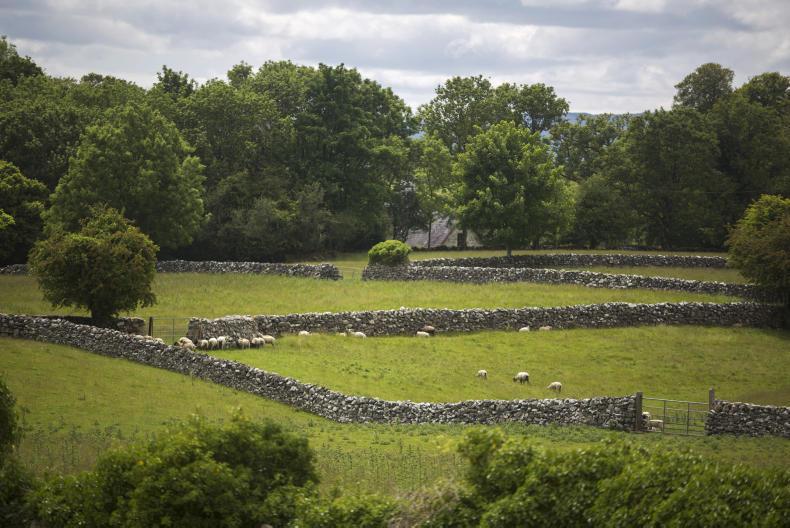When I sit here in my kitchen looking up at Slieve Gullion, it is not the epicentre of Co Armagh – it is not in any way, shape or form a massive mountain – but there is spirituality emanating from it. It was the place of so many fables: Fionn Mac Cumhaill, Cú Chulainn and the Red branch warriors.
There is a saying in south Armagh [Kick Any Stone in Ballykeel and history leaps up at you] and it was first coined by a local Gaelic scribe called Art Bennett. Basically, what he was saying is that you can take all the books from the Linen Hall (library) in Belfast, but look at a stone in south Armagh and the history leaps up at you.
When Brian Boru was killed in 1014 at Clontarf, he was brought back to be buried in Armagh. At the time, Armagh was the ecclesiastical centre of Ireland and the people recognised the importance of this burial.
We live on the lower slopes of Slieve Guillion, the highest point of Co Armagh. The farm has been passed down to me. My father and mother live beside me. It’s a typical small upland farm, though it is not as high as the likes of Kerry. We farm beef cattle and down through the years we have had a bit of everything.
Mountain leader
I have my mountain leader course for about six years and I am very proud of that because it takes a lot to get there. I then did a tour guide course down in the Mournes and a few Ring of Gullion ambassador courses as well. In terms of making money as a mountain leader, it is extremely difficult and you have to diversify.
I’m really into the history and the folklore, it’s not just about taking people into the hills. I try to weave in everything; I tell the story of my own people. I start at the house and I show them the old farm buildings, I show them my own modern bungalow. I have a purpose-built outdoor room at the side of the house. I show them pictures of my great-great-grandmother who I never knew, but the stories were handed down. I have her butter stamp and her churn is there. I am bringing people into my world.
Farming is at the centre of what I do. I can bring people up Slieve Guillion and show them a Neolithic cairn, the same age as Newgrange – built at the same period, almost 5,500 to six-thousand years of history. But what people don’t stop to think is that they were farmers. They were the first farmers. From then to now, I feel as close to them as I do to my own grandparents who are gone to their resting place now. I spent a lot of time with my grandparents when I was young and consider myself to be very lucky to have spent that time with them. My grandfather was born in 1899 and he did not die until the early ’80s.
Booleying
I identified an old booley on our upland area. As far as I understand, booleying, as we would say, is the opposite of what they do with winterage in the Burren. Traditionally on the first of May, people who lived in the lowland settlements, in the round houses, when the weather got a bit better and the uplands became a bit more accessible, would move their livestock away from the homeplace up to higher ground. It was mostly the young girls of the area who would have gone up with the stock. They brought whatever they needed and built temporary shelters known as booleys.
That tradition of booleying stretched for thousands of years up until about 300 or 400 years ago or even more recent than that. In terms of the historical evidence, a lot of it is written and passed down through song and lore.
Our booley is about half a mile from the house. It is only at 200 metres.
What makes this area so special as well is its location. There is a natural drumlin belt that runs from the Irish Sea to Sligo. We have to remember, in the 1600s, that drumlin belt was a natural defensive line.
A couple of years ago I did a geo ambassador course; essentially learning about the geology of the area. I never did geology at school so I did not think rocks could be interesting but it was fascinating.
This area – the Ring of Gullion, the Mournes and Strangford Lough – stretches from Crossmaglen to the shores of Strangford Lough. That is a 65-mile distance. There is a vast concentration in this area of Neolithic monuments; one of the best persevered cairns is just a stone’s throw from us.
We have been working very, very hard to get geopark status. It has been for years an aspiring geopark and in January it was confirmed that we now have geopark status, which is a UNESCO designation. It has no legal status, that is important to say, because there are issues with national parks and land owners because of the restrictions that can bring.
It is not just about geology though, it marries together the folklore, the story telling, the coast, and the mountains – it all intertwines and works together.
Read more
O’ the Hills of Donegal - stories and song on the northwest’s camino
Celebrating Cork's butter heritage
When I sit here in my kitchen looking up at Slieve Gullion, it is not the epicentre of Co Armagh – it is not in any way, shape or form a massive mountain – but there is spirituality emanating from it. It was the place of so many fables: Fionn Mac Cumhaill, Cú Chulainn and the Red branch warriors.
There is a saying in south Armagh [Kick Any Stone in Ballykeel and history leaps up at you] and it was first coined by a local Gaelic scribe called Art Bennett. Basically, what he was saying is that you can take all the books from the Linen Hall (library) in Belfast, but look at a stone in south Armagh and the history leaps up at you.
When Brian Boru was killed in 1014 at Clontarf, he was brought back to be buried in Armagh. At the time, Armagh was the ecclesiastical centre of Ireland and the people recognised the importance of this burial.
We live on the lower slopes of Slieve Guillion, the highest point of Co Armagh. The farm has been passed down to me. My father and mother live beside me. It’s a typical small upland farm, though it is not as high as the likes of Kerry. We farm beef cattle and down through the years we have had a bit of everything.
Mountain leader
I have my mountain leader course for about six years and I am very proud of that because it takes a lot to get there. I then did a tour guide course down in the Mournes and a few Ring of Gullion ambassador courses as well. In terms of making money as a mountain leader, it is extremely difficult and you have to diversify.
I’m really into the history and the folklore, it’s not just about taking people into the hills. I try to weave in everything; I tell the story of my own people. I start at the house and I show them the old farm buildings, I show them my own modern bungalow. I have a purpose-built outdoor room at the side of the house. I show them pictures of my great-great-grandmother who I never knew, but the stories were handed down. I have her butter stamp and her churn is there. I am bringing people into my world.
Farming is at the centre of what I do. I can bring people up Slieve Guillion and show them a Neolithic cairn, the same age as Newgrange – built at the same period, almost 5,500 to six-thousand years of history. But what people don’t stop to think is that they were farmers. They were the first farmers. From then to now, I feel as close to them as I do to my own grandparents who are gone to their resting place now. I spent a lot of time with my grandparents when I was young and consider myself to be very lucky to have spent that time with them. My grandfather was born in 1899 and he did not die until the early ’80s.
Booleying
I identified an old booley on our upland area. As far as I understand, booleying, as we would say, is the opposite of what they do with winterage in the Burren. Traditionally on the first of May, people who lived in the lowland settlements, in the round houses, when the weather got a bit better and the uplands became a bit more accessible, would move their livestock away from the homeplace up to higher ground. It was mostly the young girls of the area who would have gone up with the stock. They brought whatever they needed and built temporary shelters known as booleys.
That tradition of booleying stretched for thousands of years up until about 300 or 400 years ago or even more recent than that. In terms of the historical evidence, a lot of it is written and passed down through song and lore.
Our booley is about half a mile from the house. It is only at 200 metres.
What makes this area so special as well is its location. There is a natural drumlin belt that runs from the Irish Sea to Sligo. We have to remember, in the 1600s, that drumlin belt was a natural defensive line.
A couple of years ago I did a geo ambassador course; essentially learning about the geology of the area. I never did geology at school so I did not think rocks could be interesting but it was fascinating.
This area – the Ring of Gullion, the Mournes and Strangford Lough – stretches from Crossmaglen to the shores of Strangford Lough. That is a 65-mile distance. There is a vast concentration in this area of Neolithic monuments; one of the best persevered cairns is just a stone’s throw from us.
We have been working very, very hard to get geopark status. It has been for years an aspiring geopark and in January it was confirmed that we now have geopark status, which is a UNESCO designation. It has no legal status, that is important to say, because there are issues with national parks and land owners because of the restrictions that can bring.
It is not just about geology though, it marries together the folklore, the story telling, the coast, and the mountains – it all intertwines and works together.
Read more
O’ the Hills of Donegal - stories and song on the northwest’s camino
Celebrating Cork's butter heritage










SHARING OPTIONS